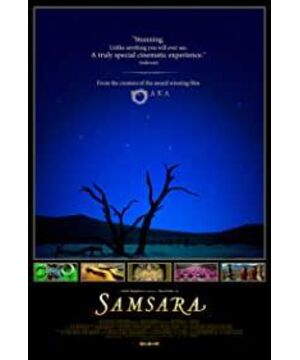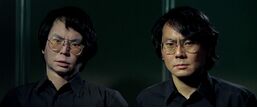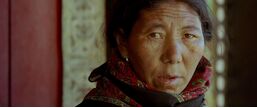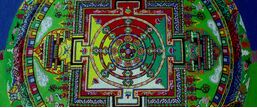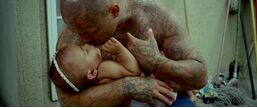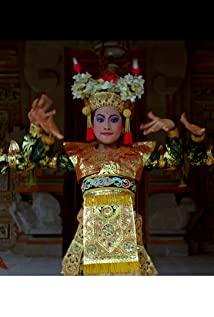The whole article is 100 minutes, no lines, all depends on the viewer to YY. I don't know if the director is too confident in himself, or is too confident in those of us watching, is he sure that we can receive what he wants to express? Or people don't care at all? Or maybe the meaning he wants to express is too complicated, so complicated that no language can sum it up, so he finds another way?
The title of the film is Reincarnation, and this is the only place the director expresses in words. Of course, I don't know what he understands about reincarnation, which is different from what I understand. Since he took this name, it is the subject of this documentary. So how did he behave?
Let’s start with some directors’ deliberate editing. During these 100 minutes, there are some repeated scenes. The film begins with monks painting elaborate sand paintings of mandalas, followed by the appearance of the Thousand-handed Avalokitesvara for a few seconds, and then the vast desert. At the end of the film, the monk destroys the beautiful sand painting without hesitation, followed by the Thousand-handed Avalokitesvara, and then the film ends in a desert. So cut these clips in half and place them at the beginning and end of the film. What do you want to emphasize? I didn't know that mandala sand paintings existed for the ultimate demise, so when I saw the monks remix such exquisite sand paintings into sand, I was completely shocked. Does this mean "empty"?
Another repetition used by directors is "orderly". There is a regular change of day and night in nature, and human society also operates regularly. This order is magnified under the lens: urban planning in modern society, factory assembly lines, indoor golf practice rooms, indoor ski resorts, prisons. When this kind of orderly stacks a lot, it suddenly feels a bit absurd. Just like the crazy performance art that uses mud to make a clown on its face, it's absurd. Just like the first second, a large number of workers were working non-stop on the factory assembly line; then when the camera changed, the car was crushed, and the obsolete products were being dismantled. Constantly building, then destroying, then building, and then destroying, is this the driving force of human progress? Like sand paintings? Built to destroy?
Large-scale breeding of chickens, cows, and pigs, and then when the camera changes, people in the Costco hypermarket are frantically buying, and the fat man is eating hamburgers, fries, and cola. Then, the camera changes again, and the doctor draws a line on the stomach of a patient who is overweight. Such chickens, pigs, and cattle are kept in the smallest possible space. Modern breeding methods first appeared in order to improve production efficiency and meet people's needs. But is people's strong demand just for some day's obesity? In this society, some people live in apartments with outdoor swimming pools on each floor, and some people have to pick up trash to get by. There are also pictures of the army, guns, and even coffins in the shape of a pistol. There are many incomprehensible phenomena, but in the end will they become "empty" and then build a new and better order? These are all human practices, just like sand paintings.
Thinking this way makes people much happier. go for meal.
View more about Samsara reviews


